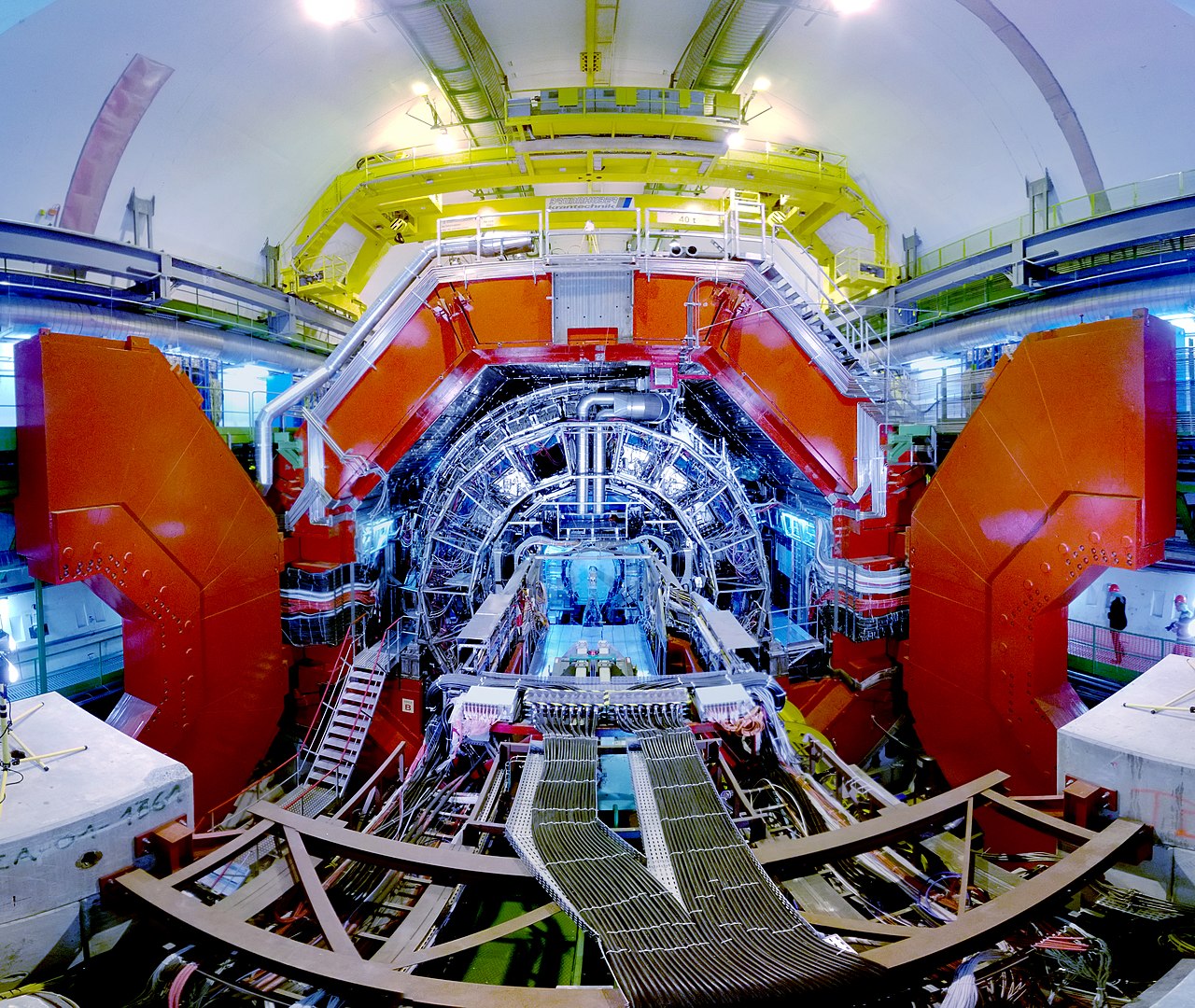
At the France-Switzerland border lies the Large Hadron Collider (LHC), the world’s largest and most powerful particle accelerator. Among its four flagship experiments, ALICE (A Large Ion Collider Experiment) is dedicated to observing and analyzing the extreme conditions created by high-energy collisions. Specifically designed to replicate and study conditions similar to those just after the Big Bang, ALICE provides crucial insights into the fundamental properties of matter at its most primordial state. Berkeley Lab plays a crucial role in this groundbreaking work thanks to its strong scientific community. LBNL serves as one of two U.S.-based Tier 2 computing centers supporting ALICE collaboration.
Mimicking the Big Bang
While much of the LHC focuses on colliding protons, ALICE specializes in analyzing the information from smashing heavy ions together at nearly the speed of light. These collisions create an incredibly hot and dense environment, briefly allowing quarks and gluons—fundamental building blocks of matter—to exist in a free state known as quark-gluon plasma.
“This unique state of matter helps us understand the early universe and study the properties of strongly interacting matter, the glue that holds protons and neutrons together,” explains Irakli Chakaberia, computer research scientist in Nuclear Science who has been involved with ALICE for the past four years. “By studying the quark-gluon plasma’s behavior as it expands and cools, researchers gain insights into how the universe transitioned from its earliest moments into the matter we see today.”
Berkeley Lab’s Critical Role in Computing
The scientific breakthroughs of ALICE wouldn’t be possible without cutting-edge computing, and this is where Berkeley Lab shines. As the lead US institution and one of 89 ALICE Tier 2 computing centers, Berkeley Lab’s team ensures that the massive amounts of data generated by ALICE are processed, analyzed, and securely stored. By providing more than just Tier 2 services, the research and development efforts of the ALICE-USA Computing team brought high performance computer resources to the collaboration.
“ALICE generates over 100 petabytes of raw data each year, making it one of the largest data producers in the scientific world,” says HPC architect John White of Berkeley Lab’s Science IT division. “Our role as a Tier 2 center is to manage part of this data pipeline—running simulations, processing analyses, and reliably storing petabytes of heavily compressed and cleaned information.”
The lab currently hosts 4 petabytes of storage for ALICE and is on track to expand this to 7 petabytes soon, with plans to add another 1.5 petabytes by the end of the year. This reliable, large-scale storage allows the data to be accessible to researchers worldwide. Additionally, Berkeley Lab provides about 3,000 CPU cores for ALICE’s computations, alongside opportunistic use of its large computing cluster – Lawrencium, and access to the NERSC Perlmutter HPC.
“Over the past two years, we’ve made excellent use of our existing resources to contribute 15-20,000 CPU cores in the past month, which is roughly 10% of cores being used at this time,” adds ALICE-USA Computing Project PI Irakli Chakaberia. “That’s the equivalent of tens of thousands of laptops running continuously.”
Innovation in Data Analysis
Recently, Berkeley Lab became home to one of three Analysis Facilities for ALICE, deployed in collaboration with its Science IT team. This new capability and specialized facility allows researchers to fine-tune their analyses on smaller datasets before scaling up to the full data collected by ALICE.
“This facility has been a game-changer,” says Karen Fernsler of Berkeley Lab’s Science IT. “It ensures researchers can iterate on their work quickly and confidently before tackling the enormous datasets, saving time and computational resources.”
The success of this analysis facility has not only helped scientists but also served as a proof of concept for scaling up similar solutions in the future.
A Global Collaboration with Local Impact
The collaboration between CERN and Berkeley Lab highlights the strength of international partnerships in advancing scientific discovery. By serving as a Tier 2 center, Berkeley Lab enables U.S. researchers to contribute to and benefit from ALICE’s discoveries. In return for their computing contributions, Berkeley Lab and other US scientists can participate in the ALICE experiment, fostering broader research opportunities.
“Our work with CERN exemplifies how collaboration and innovation at Berkeley Lab can drive global science forward,” says White. “We’re not just supporting ALICE; we’re empowering scientists to better understand the universe.”
Through its leadership in computing and data management, Berkeley Lab helps achieve ALICE’s overall success, helping to unlock the secrets of the universe’s origins and advancing the frontier of particle physics.
Article Key Takeaways
- Berkeley Lab plays a key role in ALICE, a major experiment at the Large Hadron Collider (LHC), by supporting high-energy heavy-ion collisions that mimic the conditions just after the Big Bang.
- As a Tier 2 computing center, Berkeley Lab helps process and store ALICE’s massive data output, which exceeds 100 petabytes annually, enabling global research collaboration.
- Berkeley Lab’s new ALICE Analysis Facility, developed with the help of the Science IT team, accelerates research by allowing scientists to refine their analyses on smaller datasets before scaling up to full-scale data.
- Through its computing contributions and collaboration with CERN, Berkeley Lab empowers U.S. scientists to participate in groundbreaking particle physics research, driving global scientific discovery.

